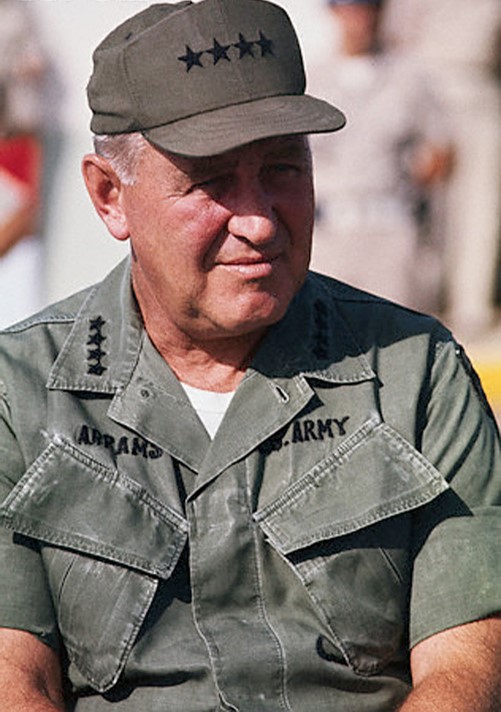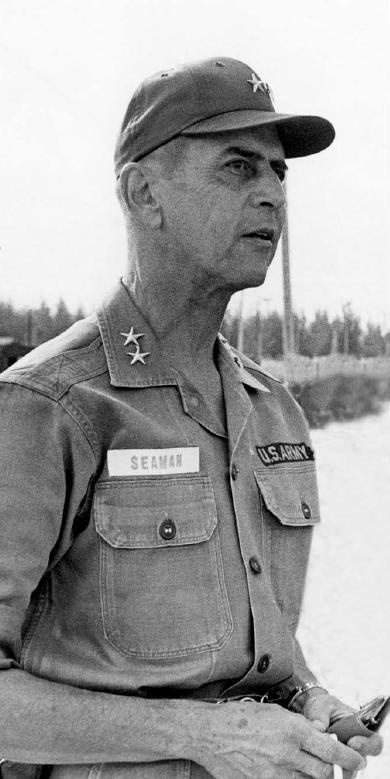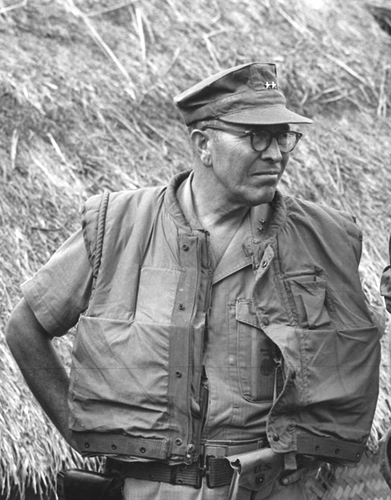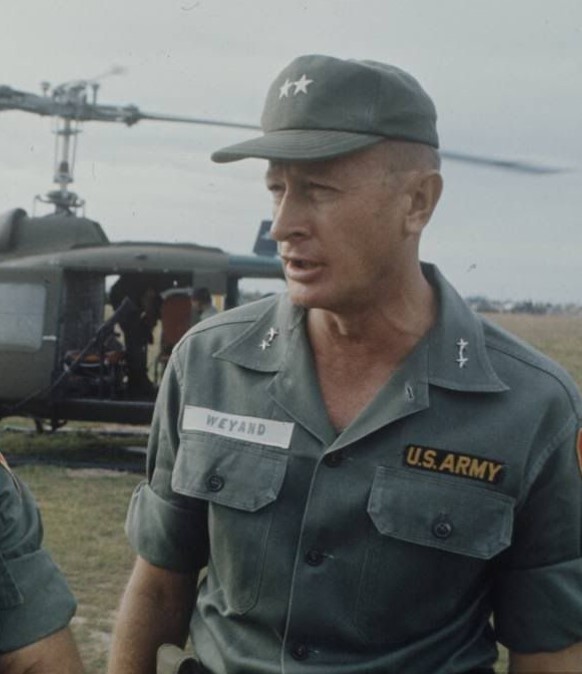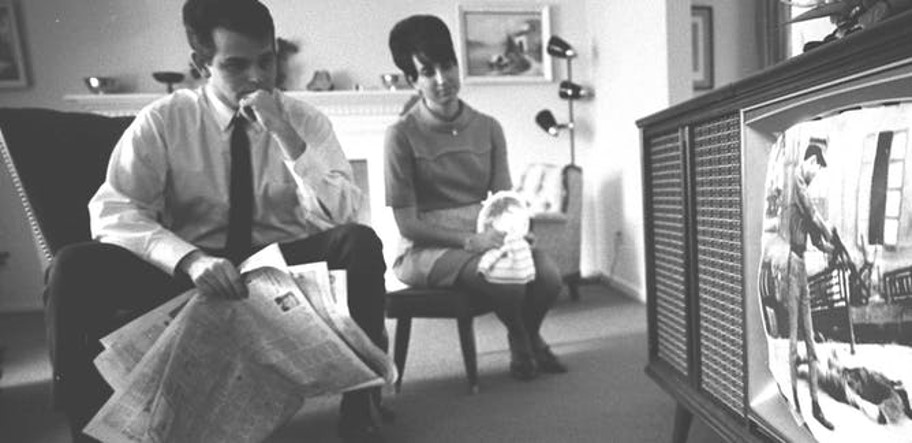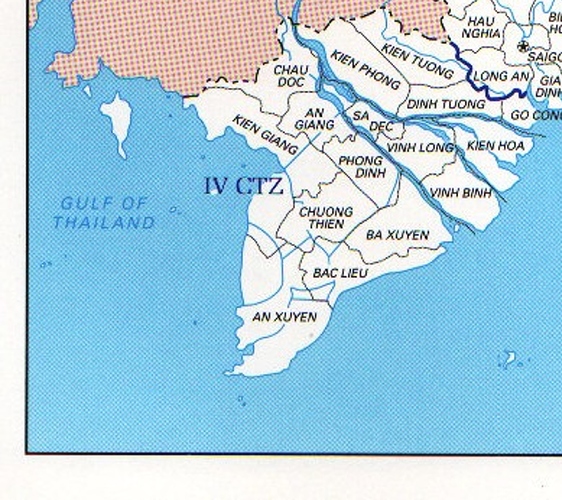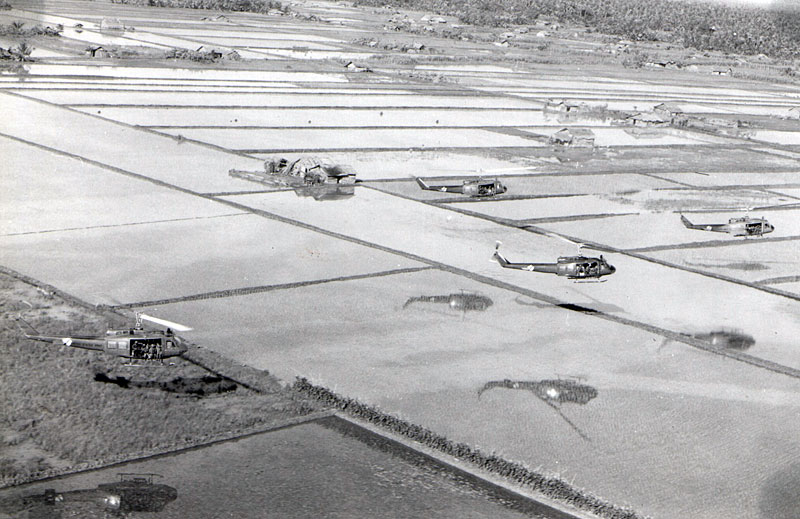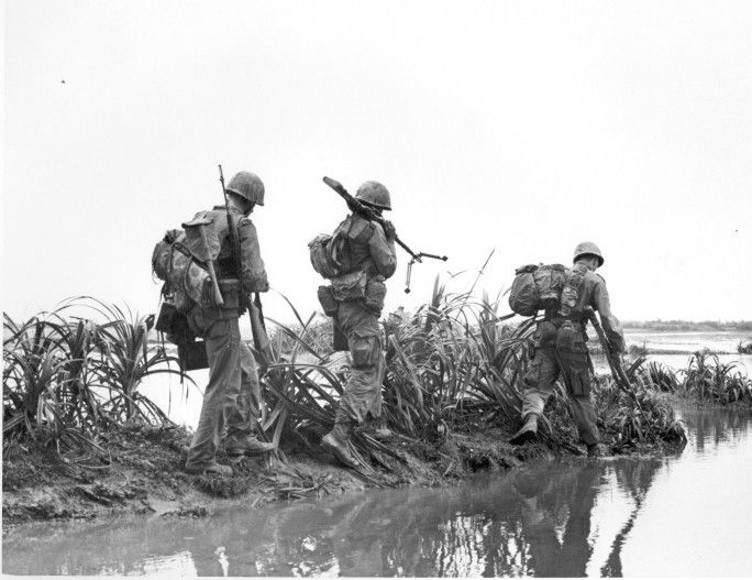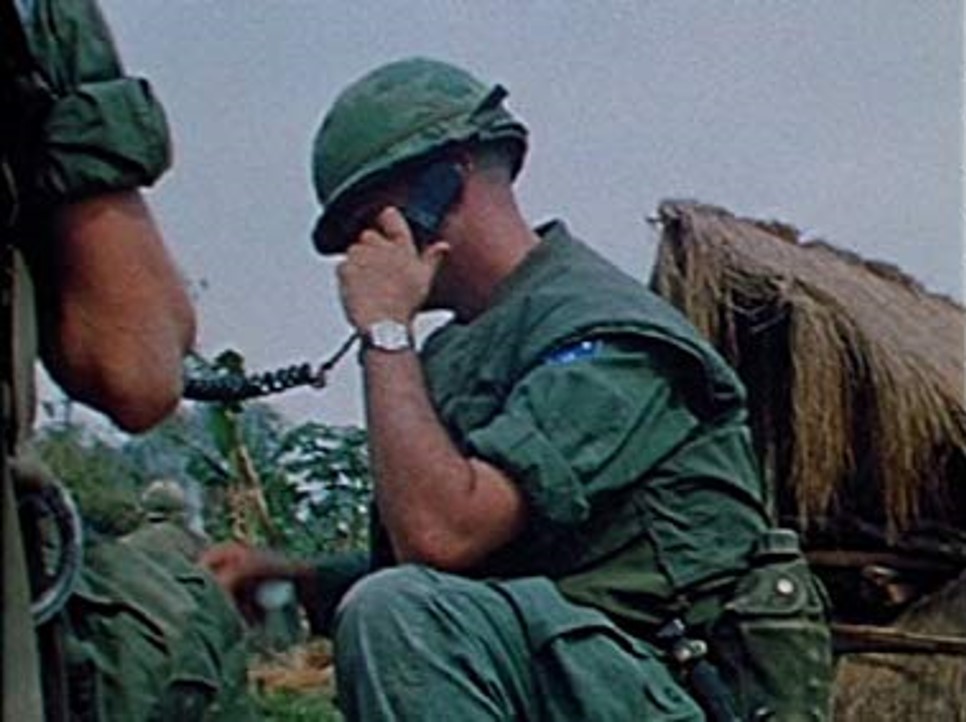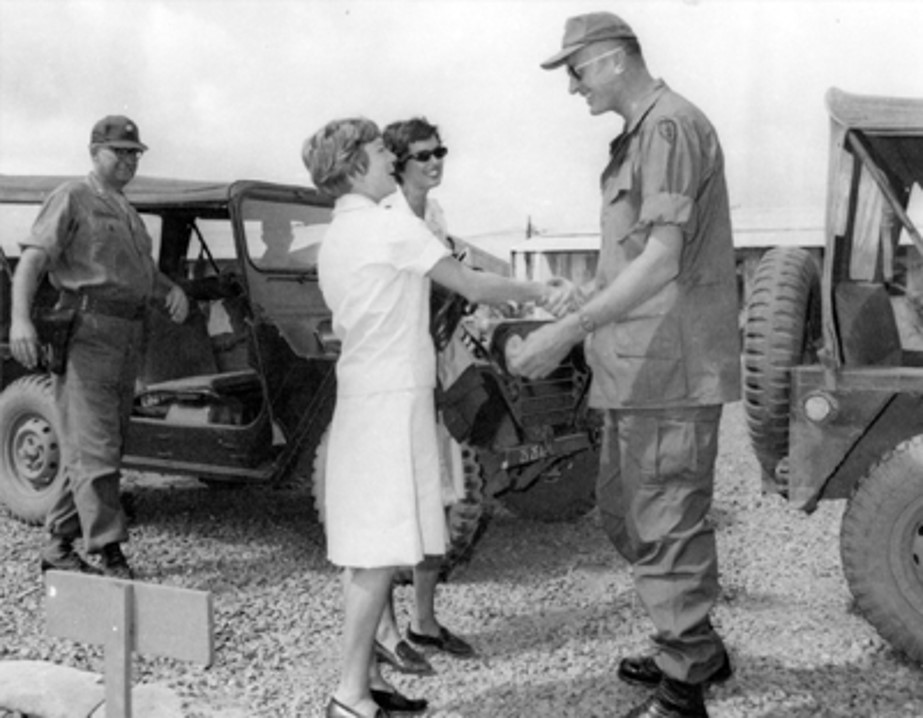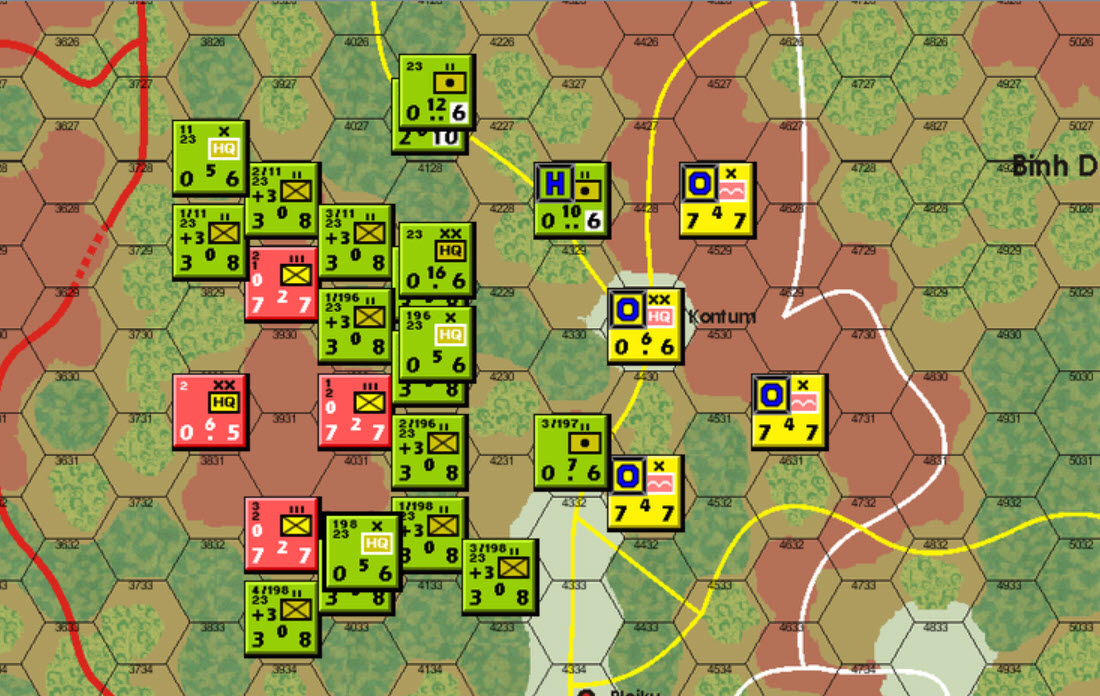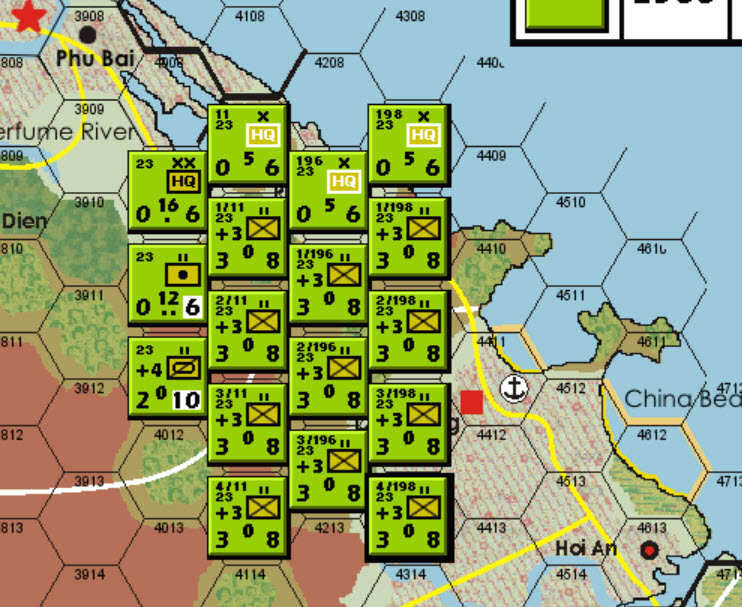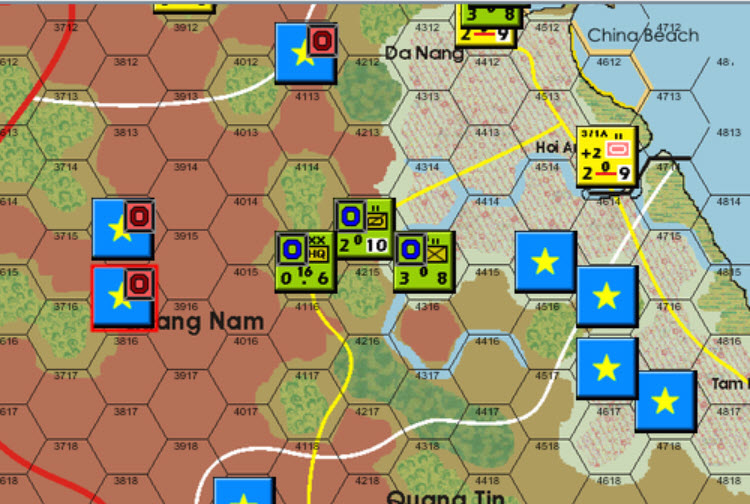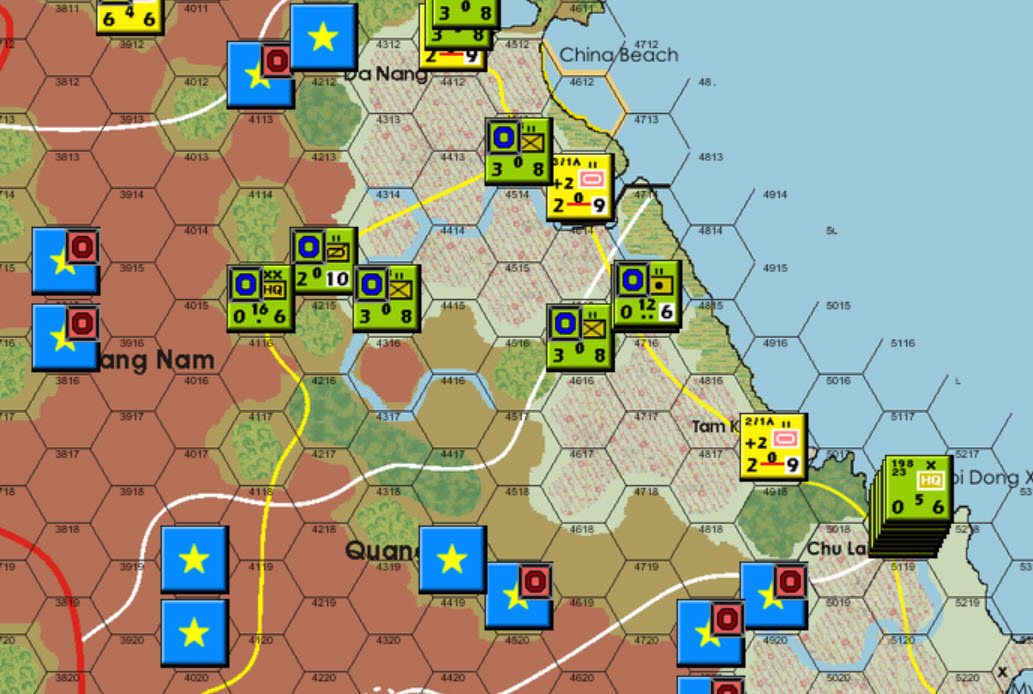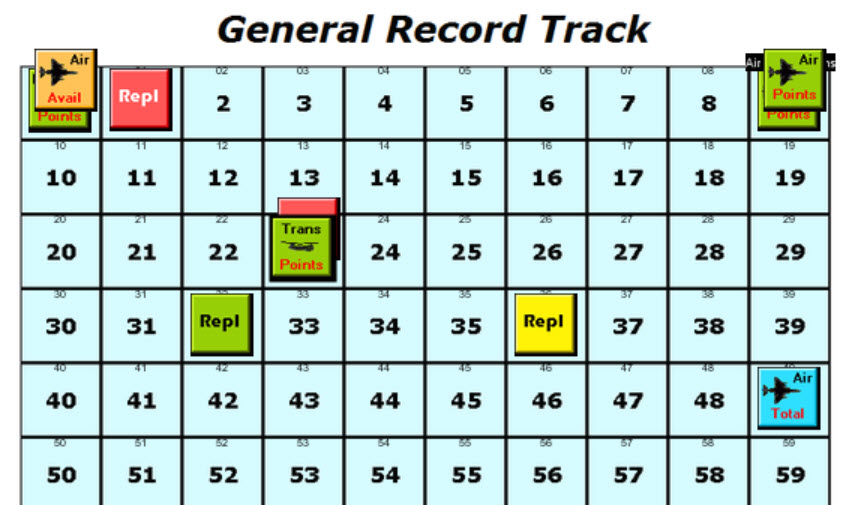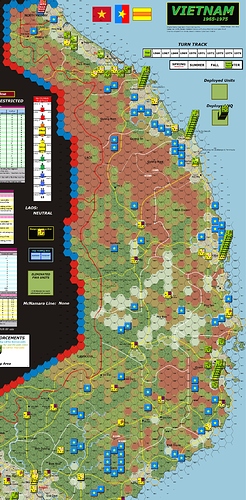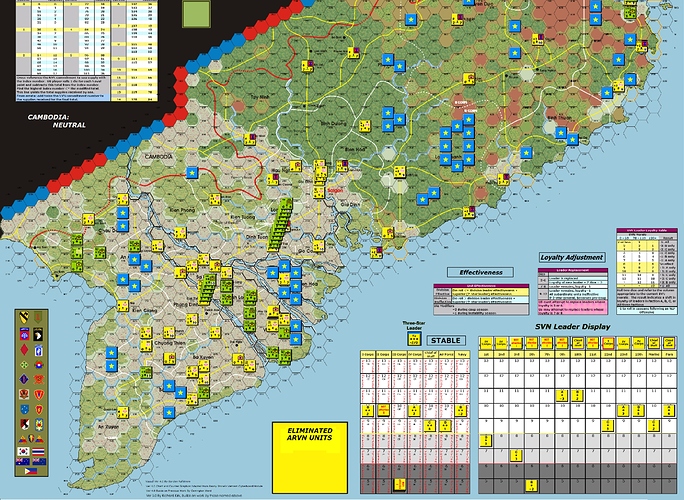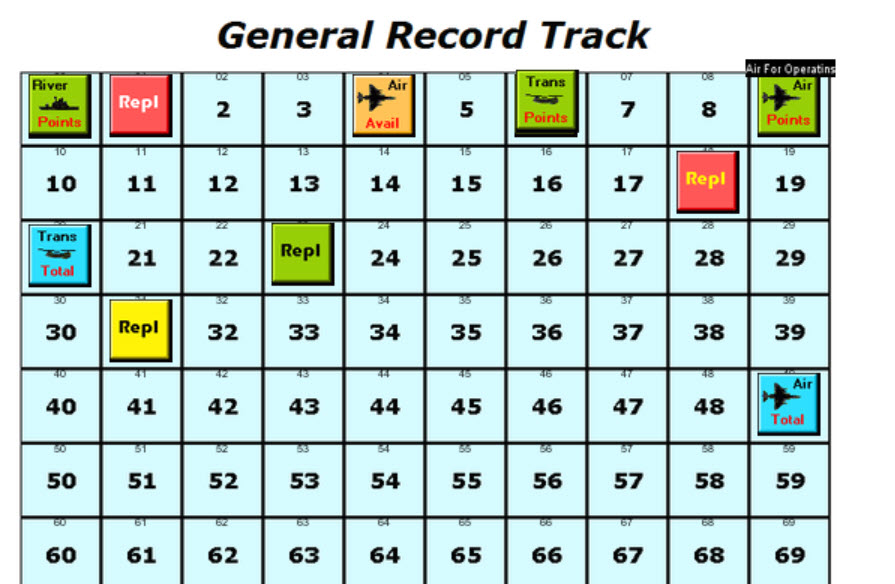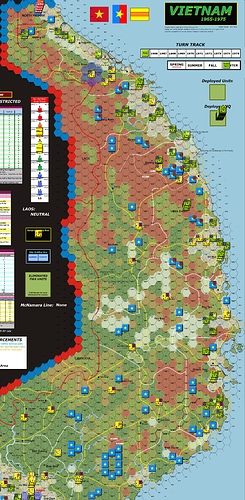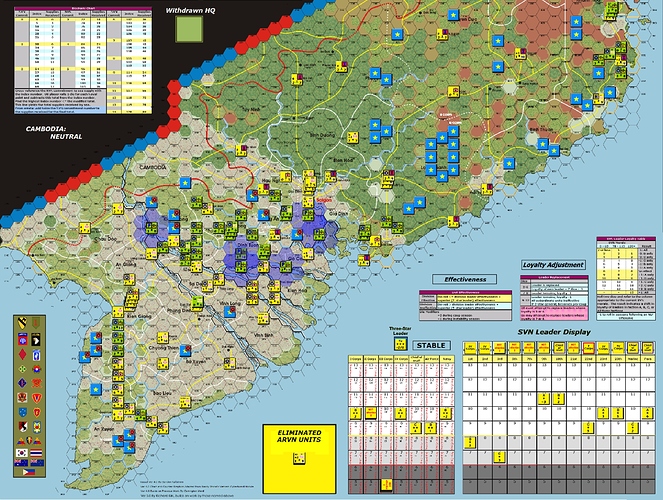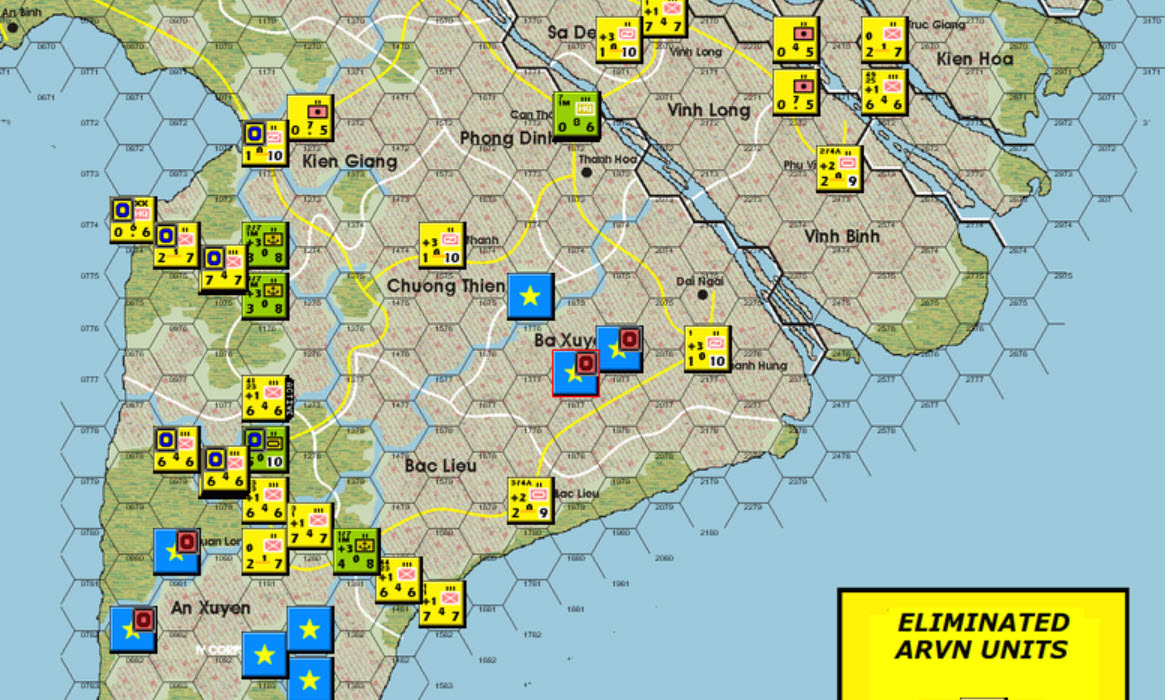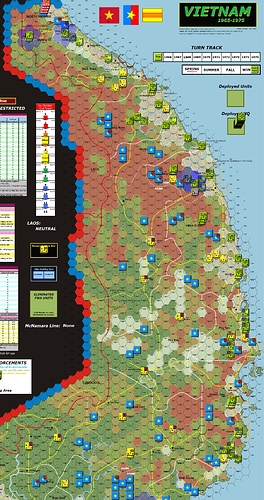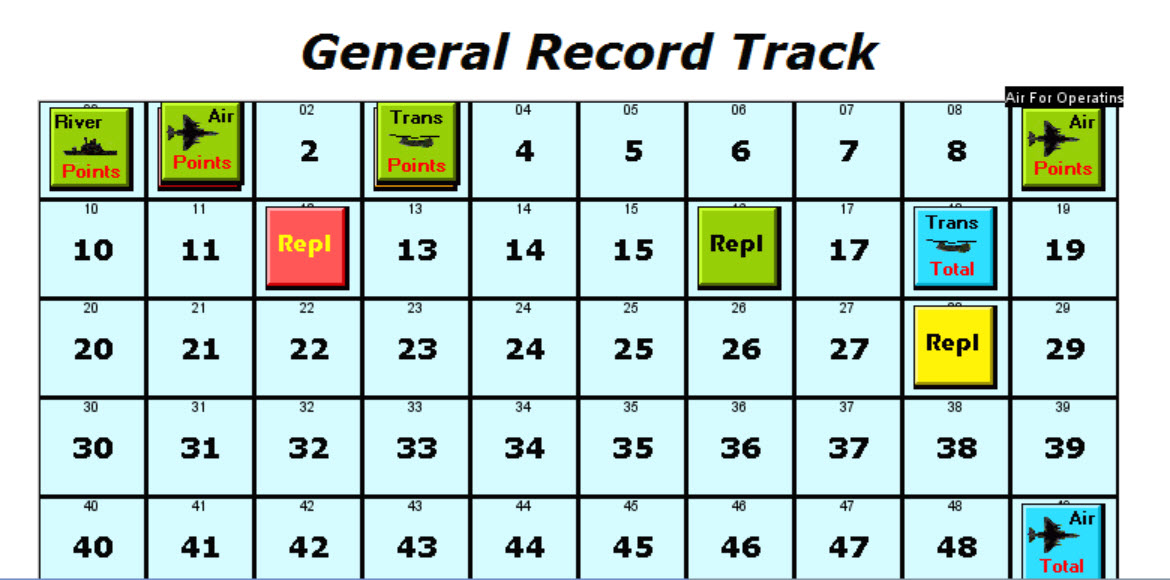California Dreamin’
Vietnam 1965-1975
Winter 1965 Narrative, Operations Exposition and Winter Operations Resolution
“I’ve been for a walk on a winter’s day. I’d be safe and warm If I was in L.A. California dreamin’ on such a winter’s day”
Take a breath, Chillax, and then please hit play before reading and turn to the maximum volume your brain or household will allow.
The Mamas and the Papas. “California Dreamin’.“ Written by John Phillips, Michelle Phillips. Dunhill Records. Music Performed by The Wrecking Crew. Released December 8, 1965. On the Billboard 100 all Winter of 1965-66, peaking at Number Four in the first week of March.
Military Assistance Command, Vietnam: Command, Staff and Major Subordinate Commanders
By December 1965, the core formations of Operation Freedom Partner were now in place under the aegis of Military Assistance Command, Vietnam (MACV).
General Creighton Abrams
General Creighton Abrams was born and raised in Springfield, Massachusetts, he was the son of Nellie Louise (Randall) and Creighton Abrams, a railroad worker. He graduated from the United States Military Academy in 1936, served with the 1st Cavalry Division until 1940, when he transferred to the Armor Branch, and became an officer in the newly formed 1st Armored Division. His combat duty during the Second World War consisted of service with the 4th Armored Division in General Patton’s Third Army. As the Commander of the 37th Tank Battalion, Abrams was at the vanguard of the Cobra Breakout from the Normandy Beachhead and in the front of Patton’s drive through France in 1944. He was awarded the Distinguished Service Cross for extraordinary heroism on September 20 and December 26, 1944. The former after the Battle of Arracourt and the latter for the relief of the besieged 101st Airborne Division at Bastogne during the Battle of the Bulge. General George Patton said of him: “I’m supposed to be the best tank commander in the Army, but I have one peer — Abe Abrams. He’s the world champion.” He joined the Korean War late in the conflict and successively served as chief of staff of the I, X, and IX Corps in Korea. He was in Germany as the assistant division commander of 3rd Armored Division and then commanded the division upon his promotion to major general, all during the Berlin and Cuban Missile Crises. He was transferred to the Pentagon as deputy Chief of Staff for Operations then was promoted to lieutenant general and commanded V Corps in Europe before being selected as Commander, MACV.
MACV J-3, Operations Officer
Major General Jonathan Owen Seaman was born in Manila, Philippines in 1911. He was appointed to the United States Military Academy, graduating with the class of 1934. By 1942 he was a major and battalion commander in the 4th Field Artillery regiment. He served in World War II in both European and Pacific theaters. From 1953 to 1954, he commanded the 30th Field Artillery Group at Yorkhof Kaserne, Germany. Noted as a brilliant Operations mind, Seaman was hand-picked by Abrams to be his J-3 when he was named MACV Commander.
Commander, US 101st Airborne Division (Air Assault)
Major General Beverly E. Powell was born in 1912 on a small farm in Henderson, Kentucky and graduated from the United States Military Academy in 1936. In WWII, he took a FA Battalion into North Africa. He crossed into Italy and drove north eventually becoming LTG Patton’s G-1. He served several staff and command tours in Korea and with NATO. He Assumed Command of the 101st Airborne in 1964
Commander, 1st Cavalry Division (Airmobile)

Major General Harry William Osborne Kinnard II was born in Dallas, Texas in 1915 and graduated from the United States Military Academy in 1939. He notably served with the 101st Airborne Division in the Second World War, parachuting into Normandy on D-Day was awarded the Distinguished Service Cross for his heroism during Operation Market Garden. He was also credited with providing the Assistant Division Commander of the 101st with the answer to the German demand for surrender at Bastogne. He then held multiple command and staff assignments before helping to develop the airmobile concept, by which troops would be flown into battle by helicopter. He was able to develop this approach while commanding the 11th Air Assault Division (Test) at Fort Benning in 1963. This unit evolved into the First Cavalry Division (Airmobile). He has been Command of this division, effectively, since 1963.
Commander, 1st Marine Division
Major General Lewis J. Fields was born on October 1, 1909, at Delmar, Maryland, and later attended a high school in Crisfield, Maryland, in 1927. He subsequently enrolled at St. John’s College at Annapolis, Maryland and graduated with Bachelor of Arts degree in Mathematics on June 3, 1931. During his junior high school years, Fields entered the Maryland National Guard and served continuously with that organization until January 1932. He struggled to find a job during Great Depression, but decided to enlist the Marine Corps in January 1932, hoping to obtain a commission. He received one in 1936 and went on to serve in the Second World War on Guadalcanal, notably at the Battle of Edson’s Ridge. He later participated in the Battle of Cape Gloucester. This was followed by Multiple NATO assignments, including several member country advisory tours, a staff assignment in Korea, and multiple staff and plans assignments before he assumed command of the 1st Marine Division in August 1965.
Commander, 23rd Infantry Division (Americal)
Major General Frederick Carlton Weyand as born in Arbuckle, California in 1916. He was commissioned a second lieutenant in the United States Army through ROTC program at the University of California at Berkeley, where he graduated in May 1938. He graduated from the Command and General Staff College at Fort Leavenworth in 1942 and served as adjutant of the Harbor Defense Command in San Francisco from 1942 to 1943. He moved on to the Office of the Chief of Intelligence for the US War Department General Staff in 1944. He became assistant chief of staff for intelligence in the China-Burma-India Theater from 1944 to 1945. Weyand graduated from the US Army Infantry School in 1950. He became commander of the 1st Battalion, 7th Infantry Regiment and the assistant chief of staff, G–3, of the 3d Infantry Division during the Korean War from 1950 to 1951. He then graduated from the Army War College, moving on to command the 3d Battalion, 6th Infantry Regiment, in Europe. He served in the Office of the United States Commander in Berlin in 1960 then became chief of staff for the Communications Zone, United States Army, Europe from 1960 to 1961. During this time in Germany, he became well-acquainted with General Abrams. He then served as the deputy chief and chief of legislative liaison for the Department of the Army from 1961 to 1964.
He was assigned as the Division Commander of the 25th Infantry Division in Hawaii in 1964, but was personally picked by General Harold K. Johnson, the Army Chief of Staff (who knew him well in Korea and in the early 60s in DC), to command the 23rd Infantry Division in May 1965 when it was forming and being readied for deployment to Vietnam. Weyand’s command of the Division is one of the factors which eased General Abrams’ mind regarding this Division’s early deployment to South Vietnam.
Country-Wide Operations
December 1965 arrived in South Vietnam and with it three US Divisions; one Airmobile, one Light Infantry and one Marine. The Concept of Operations for MACV in South Vietnam entered its second stage; country-wide operations. In IV Corps US and ARVN Forces would expend maximum effort against the NLF, as the 1st Marine Division moved into position to relieve the 101st Airborne Division, which in the words of Peter Arnett of the Associated Press, were given orders to “Kill it’s way out of IV Corps,” and rebase to the vicinity of Binh Thuan Province along the Coast at the Southern end of II Corps. Simultaneously, the 1st Cavalry Division (Airmobile) would conduct operations from its arrival ports of Qui Nonh and Nha Trang in II Corps in conjunction with the 173rd Airborne Brigade (Separate) already operating north and south of Nha Trang and the ARVN Airborne Division, operating in the vicinity of Qui Nonh. These operations were intended to deny the NLF access to the populous agricultural areas along the coasts of Binh Dinh, Phu Yen and Khanh Hoa provinces. Finally, the 23rd Infantry Division (Americal) would conduct operations from it’s arrival ports in Da Nang and Chu Lai intended to deny the NLF access to the coastal agricultural areas of Quang Nam, Quang Tin and Quang Ngai Provinces.
Operation Eindhoven, Operation Moonlight, and Operation Thần Phong (Spirit Style)
In IV Corps the 101st Airborne Division (Air Assault), the 1st Marine Division and the ARVN 1, 23 and 25 Divisions began a set of operations: Operation Eindhoven, Operation Moonlight, and Operation Thần Phong (Spirit Style).
For Operation Moonlight, the Marines would move south and west of their entry ports at My Tho and Can Tho and attempt to engage and destroy NLF Units fleeing West ward and Southward into IV Corps, in partner with the ARVN Divisions, who would be complimenting this with Operation Thần Phong (Spirit Style), establishing a cordon and also engaging NLF units in an attempt to constrict communist-held areas and destroy pockets of the enemy. The Marines would primarily be conducting ground or Airmobile operations to enhance their mobility in the Delta. The 101st Airborne Division would move Eastward, out of IV Corps, in a series of Search and Destroy operations, targeting and destroying NLF units in pockets in Northern and Central IV Corps, reaching its new base areas in Binh Thuan by the end of February.
These Operations were largely successful and accounted for most of the NLF units rendered incapable of operations in the Winter, as the concentrated use of overwhelming force and firepower had the NLF largely fleeing Allied formations. A cordon of the Ca Mau Peninsula was purposely opened in the second phase of these operations to allow “kill corridors” to be formed where fleeing NLF forces could be targeted and destroyed, while attempting to escape, rather than have Allied units venture too far Southward and find themselves out of position for operations in the Spring of 1966.
Operations Iron Soldiers and Cold Steel
The 1st Cavalry Division (Airmobile) launched two Season-long operations in Winter. The first was Operation Iron Soldiers, a combination of the nicknames of the 1st Brigade, 1st Cavalry-“Iron Horse”- and the 173rd Airborne Brigade (Separate) – “Sky Soldiers”, who conducted a series of Search and Destroy Operations emanating out of Nha Trang intended to deny the NLF freedom of movement in the coastal populated regions of Khanh Hoa and Phu Yen Provinces. These efforts were somewhat successful, resulting in the NLF abandoning the coast for mountainous terrain inland, however no NLF units were eliminated and US forces suffered 104 dead and wounded in these operations. This area of operations was planned to be handed over to the 101st Airborne in early 1966, allowing the two Brigades to commence operations at that time with the rest of the 1st Cavalry Division.
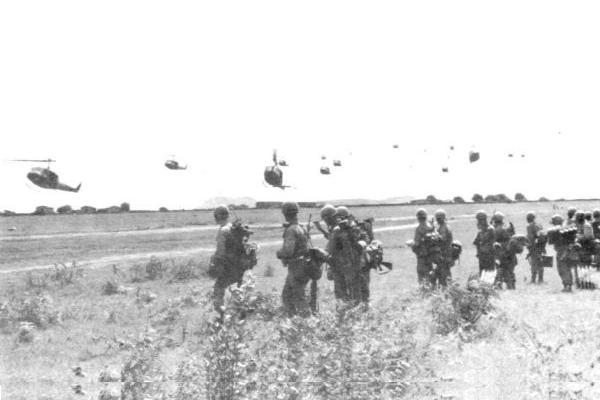
Operation Cold Steel/Thép Lạnh (Cold Steel) was a combined series of operations conducted by the ARVN Airborne Division and the 1st and 2nd Brigades of the 1st Cavalry, along with the Divisional Headquarter elements. These operations were intended to eliminate the NLF presence along the coast of Binh Dinh Province. During Operation Cold Steel II, 3 NLF Provincial Battalions were destroyed and the NLF withdrew to the Coastal Mountain range, leaving the agricultural areas.
Operation Bougainville
On December 31, the Americal Division launched Operation Bougainville from its arrival ports in Da Nang and Chu Lai with the intent of eliminating all NLF units in the coastal populated areas of Quang Nam, Quang Tin and Quang Ngai provinces in I Corps. Notable in these operations was Bougainville I, II and V, which resulted in the destruction of three NLF Provincial Battalions, the PLAF 5th Division Headquarters and approximately 2,000 Enemy Killed in Action (EKIA) at the cost of 150 US and 300 ARVN Casualties (Killed and wounded).
Bougainville I opened on December 31 with the movement of the Americal Divisional Headquarters and Artillery 50 miles South-Southwest of Da Nag on National Route 19 via Airmobile Movement. The Divisional Armored Cavalry then moved via National Routes 1 and 19 South and then Southwest, moving 5 miles Northwest of the Unknown NLF unit that was the target of the operation. The California Reservists of the 4/198th Brigade then moved overland Southwest of Da Nang and moved into close contact with the enemy. After a Sharp engagement in which the 2 Divisional Battalions of 155mm Artillery of the Americal played a decisive role in providing interdicting fire and ground support, the enemy 3 Quang Nam Provincial Battalion was overrun and destroyed on January 2, 1966.
Bougainville II launched on January 7, with the 196 Brigade Headquarters moving from Da Nang, South on National Route 1 to a position 20 miles South-Southeast of Hoi An in Quang Nam province. Here it was joined by the Divisional Artillery Battalion of 175mm Artillery, and Firebase Alameda was established. The 1/196 Brigade then moved overland from Da Nang into close contact with the 19th PLAF Battalion, in rice paddies 20 Miles South-Southeast of Hoi An. A sharp skirmish was fought, resulting in 42 US Casualties and an unknown number of EKIA. The NLF then retreated 5 miles South, deeper into cultivated land, but the Battalion attacked again on January 12, having tactical advantage and with the full support of the 175mms. The PLAF Battalion was destroyed, at the cost of 4 US Casualties. At this point, the NLF began to make a general retreat towards the Annamite range.
On February 11, Bougainville V was launched involving a battalion of each of the 196 Brigade, the 11th Brigade and the Reservists of the 198th Brigade, along with the Americal Divisional 175mms, and the Headquarter Artillery Support elements of the 19th and 11th Brigades, targeting a known NLF position containing the 9th PLAF Battalion and the PLAF 8th Divisional Headquarters. After a 3-day battle in the mountains 30 miles West Southwest of Quang Ngai City, the Battalion and the Headquarters were destroyed, at the cost of 37 US Casualties.
Overall the Operations in I and II Corps, especially those of the Americal were deemed successful, and MG Weyand won praise from the press for his Division’s operations that Winter (and some said, the spotlight was on him because of the presence of Reservists in the Division). Though Bougainville claimed more enemy casualties, the NLF country-wide were forced to move inland, degrading enemy control of these heavily populated areas. Some NLF units infiltrated back, especially in Khanh Hoa Province, where the US presence was the lightest.
Gains, But A Lot of Work To Be Done

With the ending of February, the NLF had had its grip loosened along the Coast, and its presence nearly eradicated in IV Corps. USAID officials, CIA Analysts and MACV planners though, knew that gains in Population control by the government may not be seen without a persistent effort. Helicopter losses were an issue as a result of the intensive use of Airmobility in all operations, especially in IV Corps. A planned Riverine Naval reinforcement to the Marines there would alleviate that issue. As well, along the Annamite Coastal plain, the newly arrived divisions, now joined by the 101st Airborne, would have to redouble their efforts to completely push the NLF into the interior of South Vietnam, and eliminate all units and base areas on the Coastal Plain. As well, the NLF re-occupation of Con Thien and the appearance of PAVN Artillery there meant a unique solution might be required to handle the threat along the DMZ. “This was a good start,” Abrams told Major General Seaman, his MACV J3 Operations Officer, “But that’s all it is. A good start. We need to keep moving the ball, pushing the ball, down the field.”
Winter Operations Resolution (and Exposition)
Please hit play before reading and turn to the maximum volume your brain or household will allow.
Them. “It’s All Over Now, Baby Blue.” Written by Bob Dylan. Released January 21, 1966.
The Operations Sequence
“When eating an elephant take one bite at a time” – General Creighton Abrams
What is the Operations Sequence?
For the Season’s Operations, you do this twice, in two Game Turns.
1 – Support Phase -Self Explanatory. The US player make sure all Air, Airmobile, and Riverine Points are all accurate and reflected properly on the record tracker.
2 – Special Operations Designation Phase: US Player indicates all units on Hold or Patrol. Then the NLF Player does the same. “Hold” doubles the combat and support strength of a unit for defense, for the Game Turn, but makes the unit ineligible for any other operations that Game Turn. Units on Hold also have no Zone of Control – ZoC (ZoCs inhibit enemy movement). “Patrol” doubles the ZoC effect of the Unit on Patrol; it really inhibits enemy movement. Any units that do either are Operations Complete (OC) for the rest of the turn. The only units that can’t patrol are ARVN Battalions and Headquarters (also, they have no ZOC). Everyone can go on Hold. ARVN Ineffective units can do nothing at all except Strategic Movement the whole Season). Note that either player can also place any unit(s) on Hold or Patrol later in the Operations Phase.
3 – Strategic Movement Phase: The US Player (only) may conduct Security Operations, Strategic Movement and/or Naval Movement with any of his units. The US Player may also conduct Security Operations, Strategic Movement and/or Naval Movement later on in the Operations Phase. The NLF Player may conduct Strategic Movement later on in the Operations Phase (the NLF cannot do Security Operations or Naval Movement). Ineffective ARVN Units may only conduct Strategic Movement and may only do so in this Phase.
4 – Operations Phase – This is the Heart of the Game Turn. First, the NLF decides who is going to Operate. Then the Operating player may do any of the operations outlined above, as well as:
Search and Destroy Operation (both Players): Basically, movement and then Attack by designated Units.
Clear and Secure Operation (US Player Only): A Search and Destroy, sacrificing some mobility, where the units can end the Operation on Hold or Patrol, at his choice.
Bombardment: US Air Points, US Naval Units or either players’ Artillery Units (that have not moved) may bombard an enemy unit.
Offensive Reserves (US Player Only): Units may join a Search and Destroy or Clear and Secure Operation already in progress.
Defensive Reserves (US Player Only): Units may join the defense against an NLF Search and Destroy Operation already in progress.
Note - any operation could conceivable have all that side’s units and all its support allocated to it. If a Player wants to do that. Your only limit is yourself.
5 – Game Turn Indication Phase: This is Just the End of the Game Turn. This occurs when the NLF Player Declines to Operate, the US Player Declines, and the NLF Player Declines again. Theoretically, every single Unit on Map May conduct/participate in any of the above before this occurs, but they do not have to. If it is only Game Turn One, you go back to the top there and do it all over again for Game Turn Two. When that ends, that ends the Season.
Artillery and What it Can Do for You!
Artillery and its effective use in Operations may be the most important thing a US Player needs to know when playing this game, but its use is just as Vital for the NLF player, because well, it’s the only Firepower he has, and he needs to understand its use (and implications on his operations) as well. This Season, we’ll deeply explore Artillery in the game and then spotlight some operational examples that really display its use.
There are three types of Artillery in the game: Organic, Dedicated and Independent. All have their strengths and weaknesses. Below is an example of all types.
Organic: You’ll see up there the ARVN and PAVN (NV)A Divisional regiments. They have Organic Artillery in each Regiment, 2 in each PAVN Regiment and 4 in each ARVN Regiment. Organic Artillery has a range of 1 (the adjacent hex). It can be used offensively if that unit is activated for an operation and can aid the defense of that unit only, but an unlimited amount of times (theoretically) if that unit is attacked. Pretty simple.
Dedicated: You’ll see the PAVN Divisional HQ has artillery with a strength of 6 and a range of 2 (the dot means it can fire, maximum over 1 intervening hex). The ARVN Divisional HQ is identical. Each of the US Brigade HQs has an Arty Strength of 5 with a range of adjacent (simulating 105mms). As well, the Americal (23rd Division) is special and has a Divisional HQ which has 16 (!!??) Arty Strength and a range of two. The Division also has 175mms (marked “23” with a strength of 12). All those units may fire an unlimited number of times offensively if they are in range of a target hex and a subordinate unit in its command structure is activated for an operation. Defensively, Dedicated Artillery may fire an unlimited number of times if they are in range of a target hex in which a subordinate unit in its command is being attacked. Either occurs regardless if the Dedicated Artillery has operated already or not.
Dedicated on the Offensive: This is pertinent and has some permutations. This means, for instance, that the ARVN or NVA Divisional Artillery could fire on our little sandbox three times in three separate operations. A US Division (the Americal/23rd in particular) has many more options. Each Brigade HQ may fire, theoretically, 3 or 4 times if each battalion was activated in an operation (as 2 of those brigades have 4 battalions). The two dedicated Divisional Artillery platforms may fire up to 12 (??!!) times, theoretically, given that there are 11 Infantry battalions in its 3 Brigades and one Armored Cavalry Squadron (Squadron is “Cavalry-ese” for a Battalion) in the Divisional Command Structure. This really shows the power of dedicated artillery for all Offensive Operations, and the hidden utility of using multi-divisional (or brigade) units in operations. Using one Battalion of the 23rd in a Search and Destroy operation and then units from other Divisions (as an example) makes Dedicated Artillery a force multiplier, if the Artillery is positioned with foresight to enable future operations. Of course, an experienced NLF Player knows this. Often, the mere movement of a US Headquarters within range of multiple NLF units is enough to get the units to begin a retrograde movement out of the area. Our Operational Example later will show a case in point of this effect.
Independent: The US Artillery Unit (on “Hold” in the sandbox) is an Independent Artillery Unit. It is in no Command structure. The ARVN and NVA Independent Artillery perform identically. It may only fire Offensively if activated for an operation. Defensively, Independent Artillery may fire an unlimited number of times if they are in range of a target hex in which any friendly unit on their side is being attacked. Nationality (example ARVN or US) or Force Affiliation (VC or NVA) doesn’t matter, the artillery can fire defensively in support of all friendly units. This occurs regardless if the Independent Artillery has operated already or not. Independent Artillery are limited somewhat (compared to Dedicated) on the offensive but invaluable on the Defense. The NVA have some, but the US and ARVN can deploy/build many, many such units.
Artillery on Hold: A note on Artillery placed on Hold. They lose the ability to be activated or moved and their Artillery Strength is only doubled in defense of the hex they are in. However, all Offensive and Defensive support functions described above are still in effect (undoubled, of course).
Meet the Americal!
Pretty much my favorite US Division in the game. It brings the wood.
Operational Snapshot: Operation Bougainville I and follow on operations
Here we see I have activated the Americal Divisional HQ in Da Nang and Airmobilized it. I have also activated the Americal’s Cavalry Squadron and a Battalion of the 198th Brigade. The target is an UNK VC unit in Cultivated adjacent to Forested Hills, Mountains to the NW and SW (3 Movement Point cost to enter either but also a +1 for a minor river hexside you can’t really see there that separates the hex it is in from those features) and Mountains to the South, Hills (2 MP cost) to the SE, Cultivated (1 MP cost) to the NE, and Cultivated with a Minor River hexside (2 total MP cost) to the N. When he makes his alert roll it wil be 1d6 plus the cost of 1 for the terrain he is in. He is in a tough place. I move via Airmobile movement, placing the Divisional HQ 2 hexes due West of him on the road. He is in range. So are all the other VC units within 2 hexes of the HQ. I then move the Armored Cav Squadron to his Northwest. Any VC unit that was adjacent to the end of the Armored Cav unit’s move bugs out, using Reaction Movement well out of the HQ’s range. The 198th Battalion then walks into the hex, from Da Nang in the North (it was sent there with the 196th when deployed to South Vietnam). More reaction bug-outs. I interdict him for 2 MP’s using 14 of the Division’s 16 Artillery Strength.
He rolls a “3” for alert movement. +1 for being in Cultivated = a Net 4 Movement points for alert. It costs four to leave the hex (enemy unit in hex 2 MPs, another 2 for interdiction). He can’t leave, as he’d need a 5 to even get to due North in Cultivated where he’d still be attacked. He sees the error of his ways, reveals that he is a 2-0-6 VC Battalion and disperses, adding 2 Replacement points to the VC Replacement Pool, but eliminating that Battalion.
After this all the VC in the area in range of the Divisional HQ activate and move outta range. Inland. Off of the cultivated hexes. Where I want him to go. Threat moved them.
Later, in Bougainville II I do something similar with the Americal’s Dedicated 175mms and some other units.
Wow, look at that Province’s Cultivated areas just clear itself of Communist activity.
By Bougainville V in Turn 2 of Winter, we are officially at the “Get Off My Lawn!” stage. Down near Chu Lai. Most of the VC Units that are “ops Complete” will be destroyed and the rest run for the mountains.
Artillery! You had better understand it in Vietnam: 1965-1975.
Support at Start of Operations
I and II Corps at Beginning of Winter Operations.
III and IV Corps at Beginning of Winter Operations.
Operation Eindoven I
The 101st about to destroy a VC battalion and Divisional Headquarters before using it’s pursuit to exit IV Corps.
Commentary – IV Corps was largely swept of the enemy this Turn. The VC were (largely) forced to retreat from the Coast along the Annamite Coastal Plain. My operations will be less intensive there in Turn two, as I am more interested in keeping him out of the Cultivated areas for Pacification next Interphase.
Support at End of Winter Operations 1
I and II Corps at End of Winter Operations 1
III and IV Corps at End of Winter Operations 1
The Opened Cordon
I knew the NLF would make run for it out of the Southern Delta. I left a gap for them to walk into a kill zone; my object was to have there be no more than two VC units in any one province by the end of operations. A hallmark of Moonlight II/ Thần Phong II (Spirit Style II) and all intensive Combined US/ARVN Operations is the tactic of starting the operation as US only, not taking the +1 Alert Roll penalty for using ARVN, but then calling in ARVN as Offensive Reserves to continue the operation into multiple rounds, ensuring the kill as he runs.
Commentary – Things went well. IV Corps is in hand, and now I will continue to sweep the area with the Marines leading in making contact, and the ARVN cleaning up in the Spring. But I need Riverine Points and to replenish my Airmobile Points which I need in other parts of the Country. Along the Annamite Coastal Plain, I will likely build another ARVN Division next Interphase and start to eradicate the NLF Pockets in full earnest, now that I’ll have 3 US Divisions and one Brigade in place, most being Airmobile. The goal will be no live VC in any Coastal Province. Then I’ll need to contemplate the interior of II and III Corps.
I and II Corps at Winter Operations 2
III and IV Corps at End of Winter Operations II
Support at End of Season
Eliminated NLF Formations (The “Body Count”)
“Yonder stands your orphan with his gun, crying like a fire in the sun. Look out the saints are comin’ through! And it’s all over now, baby blue.”
Next: Will President Johnson stop bombing the North? What will Pacification indicate? What will the next stage of Operation Freedom Partner bring to South Vietnam? Will US Force levels increase?
By the way, if anyone has any questions about the game or the narrative: rules, why who did what, what’s happening in the History, stuff about the music, really anything, feel free. It won’t disturb or “clutter” anything, and the initial post will be updated with bookmark quick links from time to time. I’m happy for this to be an interactive, discursive experience. If I wanted this diary chiseled on impenetrable stone, I would have blogged it. Talking about stuff here, well, it’s fun.

